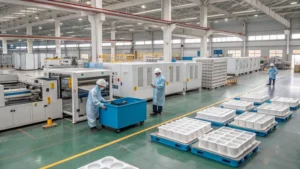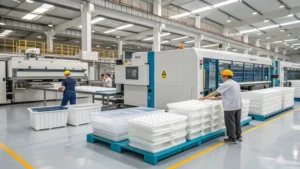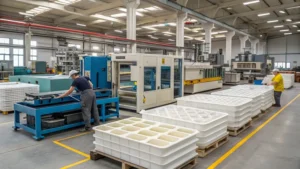
Vacuum forming, also known as vacuum thermoforming, is a simplified version of термоформование1. It involves heating a термопластичный лист2 to its forming temperature, stretching it over a mold, and using a vacuum to conform the sheet to the mold's shape. This method is particularly valuable for producing parts like packaging trays, automotive components, and medical enclosures. It's especially beneficial for small to medium production runs where the high tooling costs of other methods, like injection molding, are not justified.
- 1. Какие материалы обычно используются при вакуумной формовке?
- 2. Какие этапы включает в себя процесс вакуумной формовки?
- 3. What are the Key Factors Affecting the Vacuum Forming Process?
- 4. Каковы области применения вакуумной формовки?
- 5. How Does Vacuum Forming Compare to Other Plastic Forming Methods?
- 6. Заключение
Какие материалы обычно используются при вакуумной формовке?
Vacuum forming materials are crucial in determining the final product's properties and applications. Распространенные материалы включают HIPS3, ABS4, HDPE, acrylic, PETG, polycarbonate, and ПВХ5, each offering unique benefits for specific uses.
| Материал | Свойства | Общие приложения |
|---|---|---|
| HIPS | Экономичность, простота формирования | Упаковочные лотки, одноразовые стаканчики |
| ABS | Прочный, ударопрочный | Автомобильные детали, корпуса |
| ПНД | Устойчивый к погодным условиям, прочный | Outdoor signs, containers |
| Acrylic | Transparent, rigid | Display cases, light fixtures |
| PETG | Food-safe, clear | Medical packaging, food containers |
| Поликарбонат | High strength, heat-resistant | Safety shields, machine guards |
| ПВХ | Химическая стойкость, универсальность | Pipes, fittings, signage |
HIPS is the most commonly used material in vacuum forming.Правда
HIPS is favored for its low cost and ease of forming, making it ideal for high-volume, low-cost applications like packaging.
All thermoplastics can be used in vacuum forming.Ложь
While many thermoplastics are suitable, not all can be easily formed or maintain their properties after the process.
Какие этапы включает в себя процесс вакуумной формовки?
Сайт процесс вакуумной формовки6 is straightforward yet precise, involving several key steps to shape the plastic accurately. The process includes heating the plastic sheet, positioning it over the mold, applying a vacuum, cooling, and trimming the formed part.
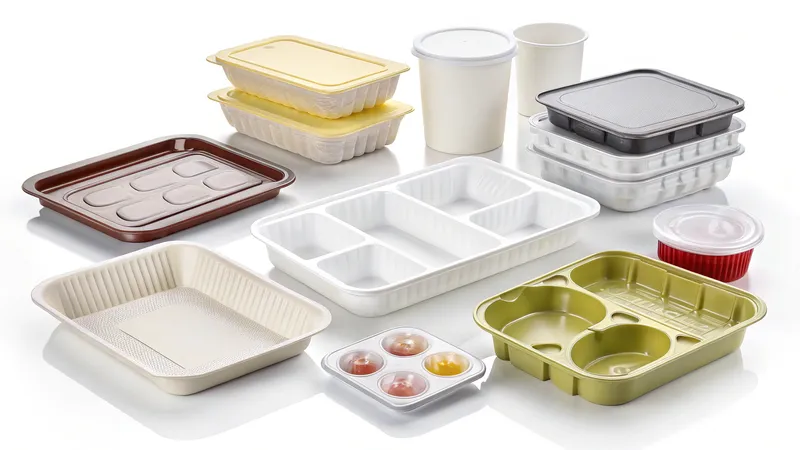
-
Heating the Plastic Sheet: The термопластичный лист7 is heated to its forming temperature using heaters.
-
Positioning Over the Mold: The heated sheet is placed over the mold, which can be made of various materials like wood or aluminum.

-
Applying the Vacuum: A vacuum is used to suck the air out between the sheet and the mold, forcing the plastic to conform to the mold's shape.
-
Охлаждение: The formed part is cooled to set its shape, often using fans or water jets.
-
Обрезка и отделка: Excess material is trimmed, and the part is finished as needed.
Vacuum forming requires expensive molds.Ложь
Molds for vacuum forming can be made from inexpensive materials like wood for short runs, making it cost-effective.
What are the Key Factors Affecting the Vacuum Forming Process?
Several factors influence the quality and efficiency of the vacuum forming process. Ключевые факторы включают температура нагрева8, vacuum pressure9, проектирование пресс-форм10, and material thickness, each impacting the final product's quality and characteristics.

-
Температура нагрева: Must be precisely controlled to ensure the plastic is pliable without degrading.
-
Вакуумное давление: Sufficient pressure is needed to conform the plastic tightly to the mold.
-
Дизайн пресс-формы: Includes considerations like draft angles and vent holes to facilitate easy removal and sharp details.
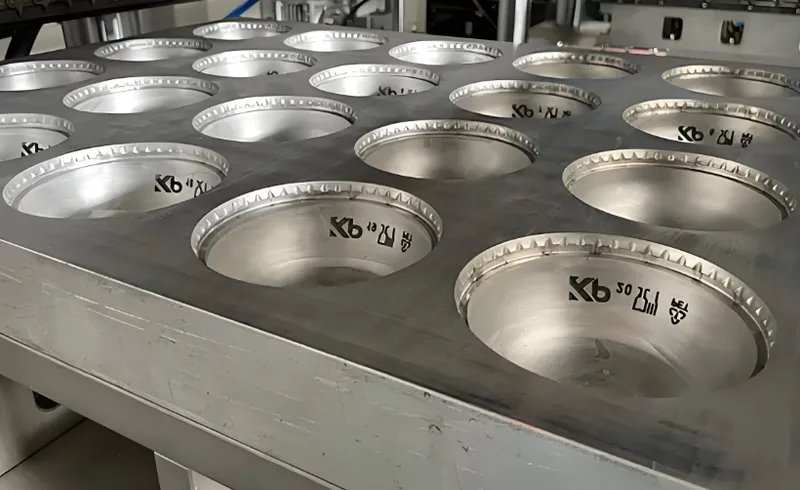
- Толщина материала: Affects the strength and formability; thicker materials may require more heat and pressure.
Higher vacuum pressure always results in better part detail.Ложь
While higher pressure can improve detail, it must be balanced with material properties to avoid defects like webbing or thinning.
Каковы области применения вакуумной формовки?
Vacuum forming's versatility makes it suitable for a wide range of applications across multiple industries.
Common applications include упаковочные лотки11, automotive parts12, medical enclosures13, and signage, benefiting from the process's cost-effectiveness and flexibility.
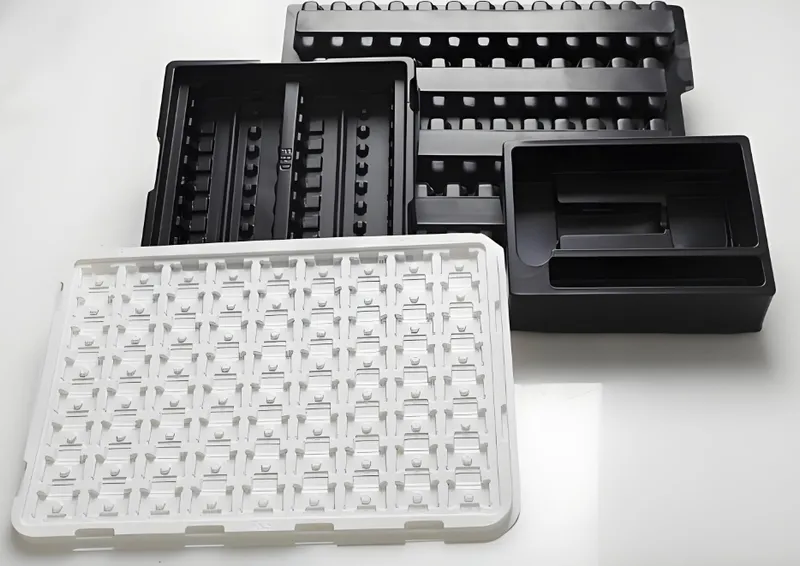
-
Упаковка: Trays, clamshells, and blister packs.
-
Автомобили: Dashboards, interior panels, and exterior components.
-
Медицина: Sterile equipment covers and trays.
-
Вывеска: Large, lightweight signs and displays.
-
Потребительские товары: Bathtubs, refrigerator liners, and toys.
Vacuum forming is primarily used for small, intricate parts.Ложь
While it can produce detailed parts, vacuum forming is also ideal for large, simple shapes like signs and panels.
How Does Vacuum Forming Compare to Other Plastic Forming Methods?
Understanding the differences between vacuum forming and other methods helps in selecting the right process for specific needs.
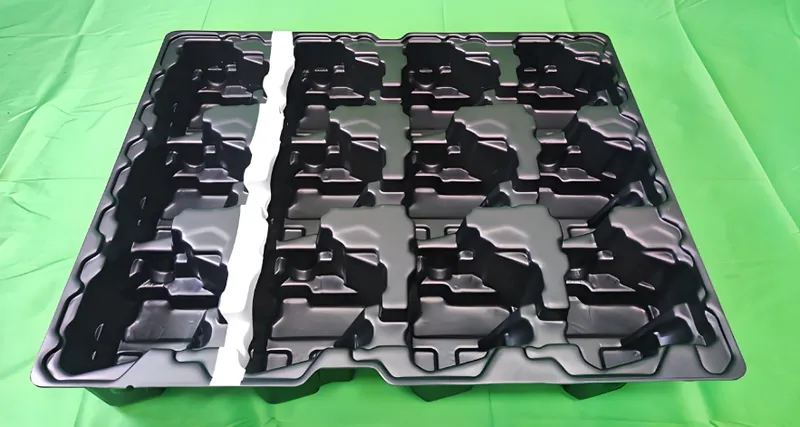
Vacuum forming is cost-effective for low to medium volumes, simpler than injection molding, and more versatile than 3D printing for larger parts.
| Метод | Плюсы | Cons |
|---|---|---|
| Вакуумная формовка | Low tooling costs, fast production, suitable for large parts | Limited complexity, may require finishing |
| Литье под давлением | High precision, complex shapes, high-volume capability | High tooling costs, longer lead times |
| Формование под давлением | Better detail than vacuum forming, moderate costs | Higher costs than vacuum forming, less precise than injection molding |
| 3D-печать | Ideal for prototypes, complex geometries | Slow for large volumes, limited material options |
Vacuum forming is less expensive than injection molding for all production volumes.Ложь
For very high volumes, injection molding's per-part cost can be lower due to economies of scale.
Заключение
Vacuum forming is a versatile and cost-effective manufacturing process ideal for producing a wide range of plastic parts, especially for low to medium production runs. Its ability to quickly create detailed shapes with relatively low tooling costs makes it a popular choice across industries like automotive, packaging, and medical. By understanding the materials, process steps, key factors, applications, and comparisons to other methods, manufacturers can leverage vacuum forming to optimize their production processes.
-
This resource will clarify the distinctions between these two important manufacturing processes. ↩
-
Learn about the different thermoplastic materials that enhance the vacuum forming process and their applications. ↩
-
Explore the unique advantages of HIPS in vacuum forming, including cost-effectiveness and ease of use, to enhance your projects. ↩
-
Learn why ABS is a top choice for automotive applications, focusing on its durability and impact resistance for reliable performance. ↩
-
Discover the versatility of PVC in vacuum forming, including its chemical resistance and wide range of applications in various industries. ↩
-
Understanding the vacuum forming process can enhance your knowledge of plastic shaping techniques and their applications. ↩
-
Exploring thermoplastic sheets will provide insights into their properties and versatility in various industries. ↩
-
Understanding heating temperature is crucial for optimizing the vacuum forming process and ensuring product quality. ↩
-
Exploring vacuum pressure's role can enhance your knowledge of achieving better mold conformity and product quality. ↩
-
Learning about mold design best practices can significantly improve the efficiency and quality of your vacuum forming projects. ↩
-
Explore how packaging trays enhance product safety and presentation, making them essential in multiple sectors. ↩
-
Discover the innovative techniques in vacuum forming that improve the production of automotive parts. ↩
-
Learn about the critical role of vacuum-formed medical enclosures in ensuring safety and compliance in healthcare. ↩



